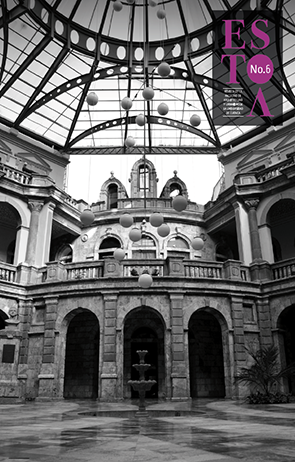The heritage as a resource: the change of paradigms in urban conservation from an international perspective
DOI:
https://doi.org/10.18537/est.v004.n006.12Abstract
The article looks at the emerging notion of the heritage as a resource to the development from two inputs: the discipline of urban conservation and the global discourse on culture and development. To review progress on both and clarify the links between the city, historical environments and sustainability, a set of valuable views are identified to rethink strategies for urban development in the Andean and Ecuadorian cities.
Keywords: Heritage, conservation, town planning, Ecuador.
Downloads
References
Dennis Rodwell, Conservation and Sustainability in Historic Cities. New York: Wiley-Blackwell, 2007.
Bernard Feilden y Jukka Jokilehto, Management Guidelines for World Cultural Heritage Sites. ICCROM, Roma, segunda edición, 1998.
Garcia G, et al. “Towards a contemporary approach to the study of Development and Cultural Heritage”, en Reflections of Cultural Heritage. RLICC KU Leuven, Bélgica, 2015.
Jhon Hawkes, The Fourth Pillar of Sustainability: Culture's Essential Role in Public Planning. Australia: Common Ground Publishing y Cultural Development Network, 2001.
Dolores Hayden, The Power of Place: Urban Landscapes as Public History. Cambridge, MIT Press, 1997.
Raymond Lemaire y Herb Stovel (eds.), Nara Document on Authenticity. Nara, Japón, 1994.
Maider Maraña, Cultura y Desarrollo: Evolución y Perspectivas, UNESCO-Etxea Cuadernos de trabajo, No. 1. UNESCO-Etxea, 2010.
Keith Nurse, “Culture as the Fourth Pillar in Development”, Small States, No. 11, 2006.
Christian Ost, “Mapping heritage economics for spatial analysis”, en The Economics of Uniqueness. Banco Mundial. Washington, 2012.
Janet Pillai, Cultural Mapping: Understanding, Community, Place and Continuity. Malaysia: SIRD, 2013.
Kate Swanson, “‘Bad Mothers’ and ‘Delinquent Children’: Unravelling anti-begging rhetoric in the Ecuadorian Andes”, en Gender, Place and Culture, Vol. 14, No. 6, 2007.
Raf Tuts, “UN-Habitat and Sustainable Human Settlements”, en d'Auria, De Meulder y Shannon (eds.), Human Settlements Formulations and (re)Calibrations, UFO Series 02. Amsterdam: Sun Architecture, 2010.
The World Commission on Development and Culture, Report: Our Creative Diversity. UNESCO, París, 1995.
UNESCO, “Recommendation concerning the Safeguarding and Contemporary Role of Historic Areas”, en Sesión número 19 de la Conferencia General de las Naciones Unidas. Nairobi, 1976.
UNESCO, Convention for the Safeguarding of the Intangible Cultural Heritage. UNESCO, Paris, 2003.
Christien Klaufus, Urban Residence: Housing and Social Transformations in Globalizing Ecuador. New York, Amsterdam: Berghan Books & CEDLA, 2012.
Downloads
Published
How to Cite
Issue
Section
License
The Journal declines any responsibility for possible conflicts derived from the authorship of the works that are published in it.
The University of Cuenca in Ecuador conserves the patrimonial rights (copyright) of the published works and will favor the reuse of the same ones, these can be: copy, use, diffuse, transmit and expose publicly.
Unless otherwise indicated, all contents of the electronic edition are distributed under a Creative Commons Attribution-NonCommercial-ShareAlike 4.0 International License.




